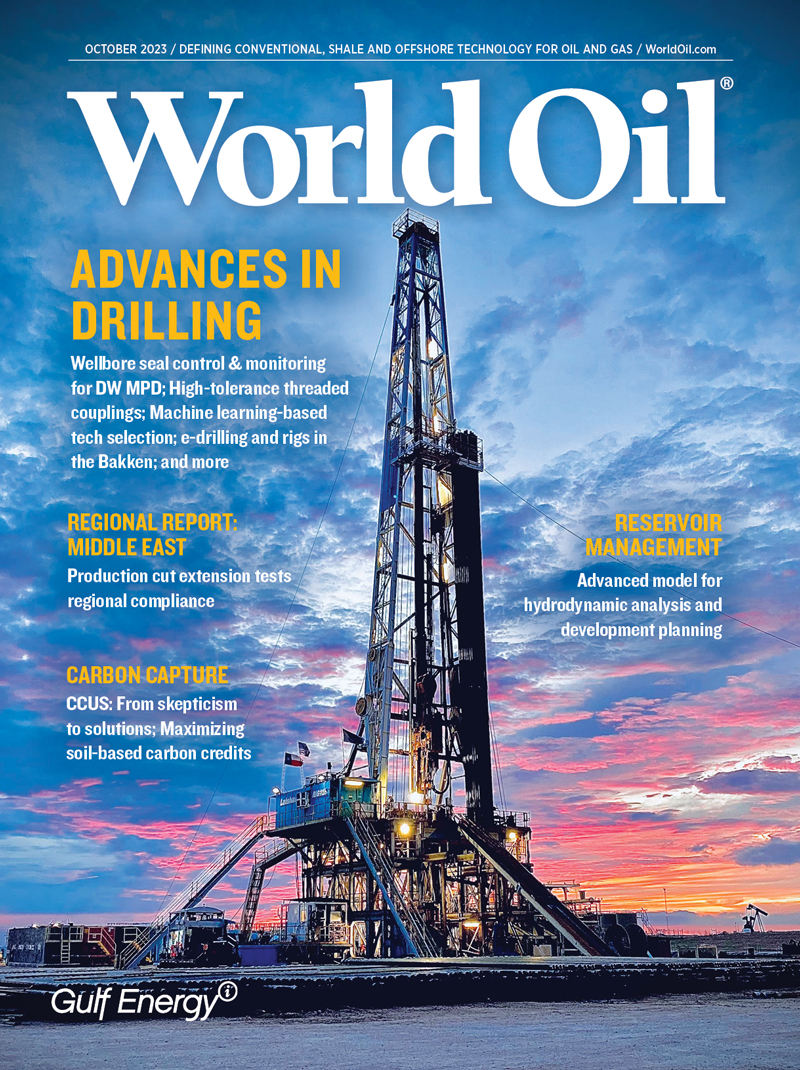Issue: October 2023
Special focus: Advances in drilling
The industry’s first active sealing device for deepwater managed pressure drilling provides greater control and condition monitoring of the wellbore seal, reducing maintenance costs and rig downtime.
The rugged Delta connection provides wider field inspection tolerances. This case history illustrates how focusing on KPIs can lead to inefficiencies and increased costs, and more importantly, how to avoid this trap.
Partnering with a coupling expert can help meet or exceed the industry’s most rigorous tolerance and quality standards.
The drilling challenge remains the same: Drill faster and more efficiently to reduce drilling time. New technologies are being introduced to evolve to one run intervals, which reduces drilling time.
An innovative digital solution prepares an operational database and stores performance results of drill bits, motor power sections, RSS, BHA configurations and drilling fluids. After parameters of a planned drilling run are set, a multidimensional distance-based approach selects similar previous drilling runs for analysis. The process enables rational technology selection recommendations.
Onshore drilling rigs need consistent, reliable power to operate efficiently, but they no longer must rely on diesel generators. A mobile substation that allows a rig to tap into the electrical utility grid provides a straightforward way to reduce reliance on fuel-burning generators, without compromising operational efficiency or productivity.
Features
Saudi-led production cut extension tests regional compliance
The journey from CCUS skepticism to solutions is driven by the need to capture 5,635 megatons of CO2 annually by 2050. While the target is steep, through embracing technology neutrality, collaboration, and lessons from existing projects, the CCUS industry should experience large-scale growth through standardized approaches and global cooperation.
Sub-atomic and nano-laser diagnostics help quantify 25 times more CO2/acre in Texas initiative.
To enhance oil recovery efficiency during production, a deep understanding of lower well pressure history and reservoir hydrodynamics is crucial. This study offers a comprehensive assessment of the reservoir's hydrodynamic status and effectiveness of the water drive mechanism, providing valuable insights for reservoir analyses in similar oil-rich regions.
Even with relatively high oil prices, U.S. E&P activity growth remains modest. Much of the spending increases by operators this year has gone to covering higher equipment, service and personnel costs, rather than to boost activity.
Columns
Upstream situation in Eastern Mediterranean deteriorates
Call for intervention
Climate lawsuits pile on the industry
Methane in produced water / VOCs and produced water
Energy, economy and environment: Nuclear’s triumphant return
Can't keep a good industry down
Resources
In September, Saudi Arabia and Russia produced approximately 9 MMbopd each, as both countries continued to honor their 1 MMbopd supply reduction pledge, despite a 2.3 MMbopd increase in global demand led by China, India and Brazil



